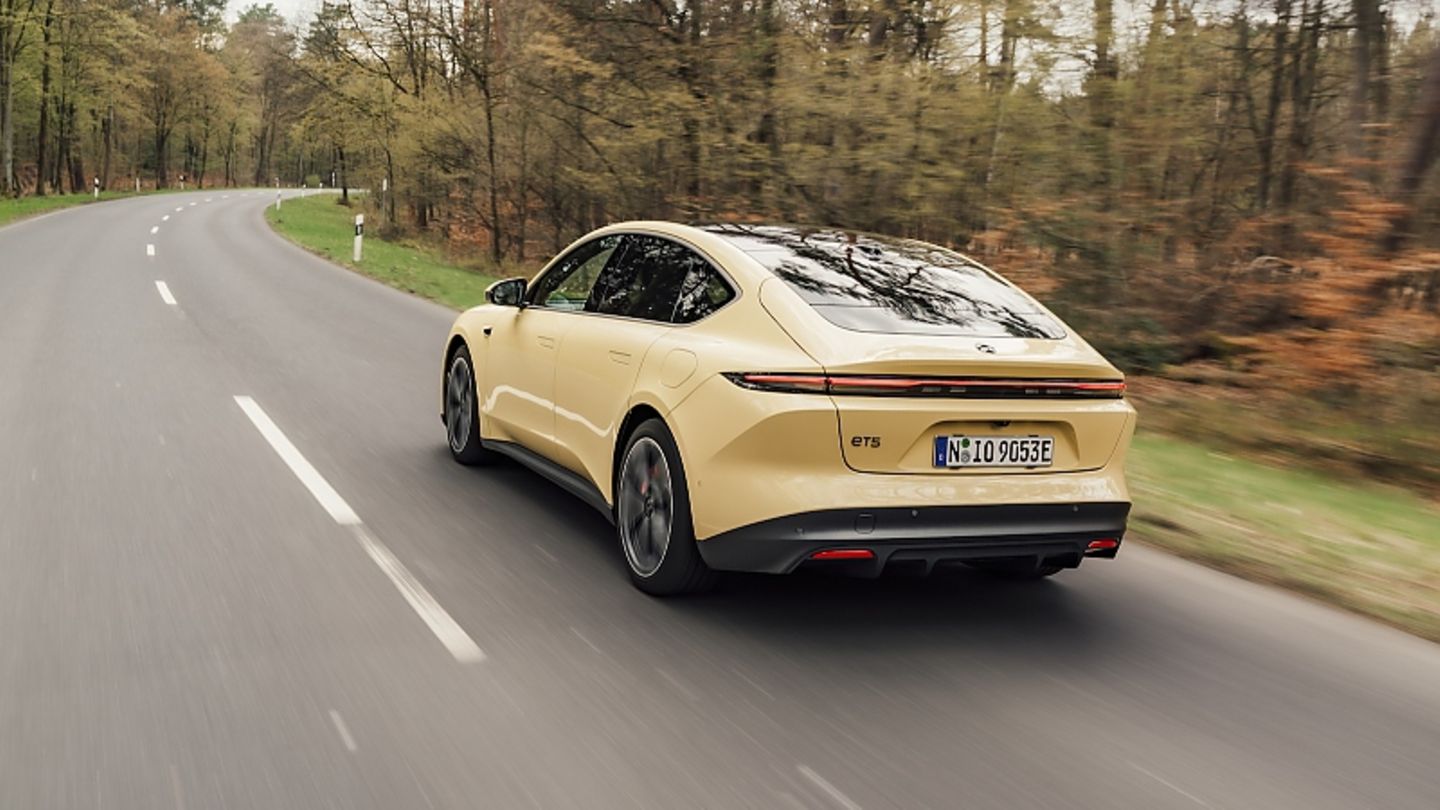The European premium manufacturers in particular are hardly able to rest at the moment. The best example is the new Nio ET5, with which the Chinese carmaker wants to attack models such as the Audi A4, BMW 3 Series and Mercedes C-Class. Not only is its design extremely pleasing, but the technology also fits.
More than other Chinese car brands, Nio is as loud as it is self-confident in its commitment to the profitable premium segment and, with community ideas or trendy Nio houses, is on a confrontational course with the German premium trio and competitors from Tesla and Polestar. The new ET5 is pleasing, with a length of almost 4.80 meters in the heart of the noble middle class and offers driving performance that should hardly leave anything to be desired by the vast majority of customers. The customer hardly has a choice, because the ET5 package gives you hardly any variance apart from the nine different exterior colors and four colorations on the inside. The four-door mid-range sedan is driven by two electric motors that deliver an impressive 360 kW / 480 hp and a maximum torque of 700 Nm. From a standing start, the all-wheel drive vehicle creates the image spurt to 100 km/h in four seconds. The top speed is limited to 200 km/h. The tremendous thrust is not surprising in view of this drive package.
But how much steam the driver and passengers feel depends heavily on the respective driving program. It gets snappy in the two sport modes – otherwise it’s more timid, but hardly less emphatic. The chassis is comparatively comfortable and you have to get used to the steering, because the feedback from the steering wheel is much more artificial compared to some of the competitors and you miss direct contact with the road. Pleasant even at higher speeds – the low wind noise, which contributes to the high quality of life inside.
The interior is spacious, looks classy and well made. For a new vehicle, both the 12.8-inch central display and the 10.2-inch instruments behind the steering wheel should be larger. The chairs with the slightly too high seating position are comfortable, the door panels and dashboard have a sober, almost Scandinavian cool design, while the standard panoramic roof brings a lot of light into the interior. However, the imitation leather seats could be nobler for a vehicle in the 60,000-euro league and not offering the customer real leather seats even in a noble equipment package is just as much an oversight as the missing head-up display. The friendly operating assistant Nomi Mate sits on the dashboard, which supports the driver with its artificial intelligence for all kinds of inquiries. If the Mate smiles too intrusively, you can opt for the visually and linguistically tamer version of the Nomi Halo, which is intended to appeal to more conservative customers. A lot of effort for little real distinction and therefore to assume that one will decide in time for one of the two characters in the house of Nio. The loading volume is a manageable 386 liters – not much, but always sufficient.
Despite the complete equipment, the pricing is more complicated than with the direct competition. It starts with the small 75 kWh battery pack for 47,500 euros. Sounds extremely cheap – but it’s not, because at this cost price there is no battery in the underbody. This costs Nio a further 12,000 euros if it is to be the small package with an electric range of 456 kilometers. Most customers are likely to be interested in the version with the larger 100 kWh battery pack, which, however, costs an additional 21,000 euros including the battery pack and gives the driver 590 kilometers to the next refueling stop. The comfort package with air-conditioned massage seats, steering wheel heating and seat heating in the rear costs 1,500 euros.
However, anyone who buys the battery pack cannot drive to the changing stations to shorten the usual charging stop to five minutes through the automated battery exchange. The maximum charging capacity of 140 kilowatts leaves a lot to be desired for a new mid-range electric vehicle. BMW offers its i4 with 195 kW and Tesla allows the double pack of Model 3 / Model Y to be refueled with up to 250 kW. Those who do not buy the battery pack pay between 169 and 289 euros per month for additional battery rental. For many, the car subscription model should be the easiest way to get into a Nio anyway. This is where the Chinese carmaker expects the greatest demand in the long term. The costs 978 to 1,238 euros per month.
Source: Stern
I’m a recent graduate of the University of Missouri with a degree in journalism. I started working as a news reporter for 24 Hours World about two years ago, and I’ve been writing articles ever since. My main focus is automotive news, but I’ve also written about politics, lifestyle, and entertainment.




